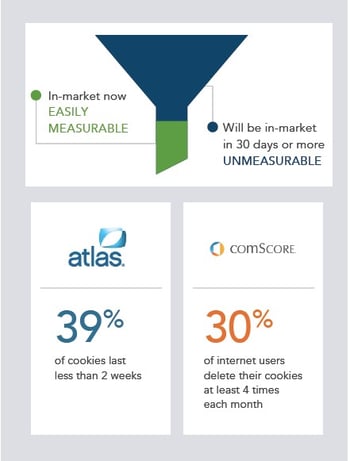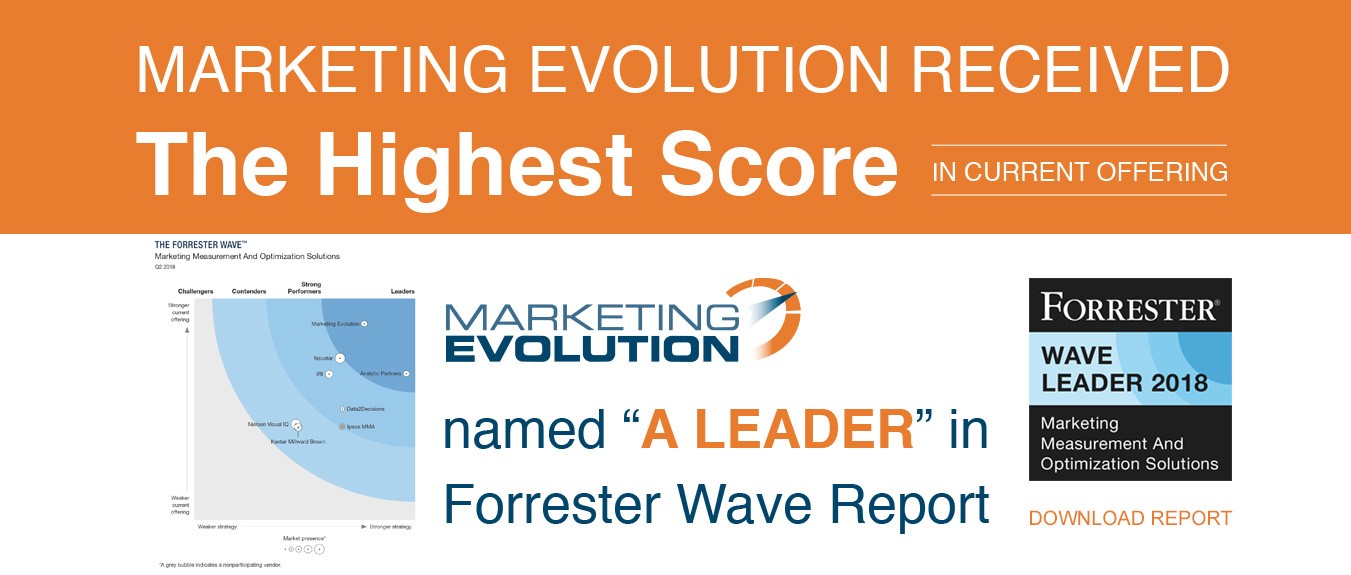Attribution Buyers Guide: Measuring at the Person Level – Part Two

There is no doubt that the challenges facing marketing professionals at companies both large and small have gotten more pronounced over the past few years. Measuring the effectiveness of our marketing was never easy – Even when we were advertising on just a few television networks, some radio stations and in a few newspapers. The stakes have only gotten higher as we try to sort out the benefits of trying to reach consumers through television networks, satellite radio, digital advertising, email, social networks, and the other millions of modern day distractions competing for customer’s attention.
What compounds the challenge is the increasing fatigue of consumers pummeled by unwanted messages promoting products and services that they just don’t need. Even well-meaning marketers may inadvertently contribute to the problem by not appreciating their own customers’ journeys. As we mentioned in our last article, without a deeper, person-centric understanding of our marketplace some of our efforts may be doing more harm than good.
This installment in our ongoing Attribution Buyers Guide series is the second of two articles in which we explore the challenges current tools face trying to provide a clear view of customers’ needs and intents.
Digital Signal Bias
Lacking a better way, most marketers tend to look at digital KPIs to gauge the effectiveness of their digital marketing (possibly other channels’ marketing, too). All of their activity is reported in their MTA which makes it easy. Perhaps they missed options for integrating offline sales with media from across channels. Clicks and online buying signals are not representative of the overall buying population, however, those that sell offline or through a combination of bricks-and-clicks are seeing an incomplete and often misleading picture and should ensure that they are connecting all key purchase and even post-sale data into their models.
Why This Matters
Like the other biases noted in this section, digital signal bias may cause marketers to make erroneous optimization decisions, impairing advertising effectiveness. Take the example of an insurance company whose MTA indicated that digital video was a prohibitively expensive tactic for driving online quotes. However, when it began connecting digital tactics to offline sales (where 95% of its sales were conducted), digital video was determined to be one of the most cost-effective tactics.
What to Ask
- How does your platform ensure that our digital KPIs are reflective of our offline sales?
- How do you match our offline sales data to our digital exposure advertising activity so that we can understand how digital marketing drives offline sales?
Cookie Crumbles
Digital marketers are all too familiar with limitations of cookie-based measurement. For starters, industry best practices  maintained by the NAI (Network Advertising Initiative) call for ad servers to delete cookies at least every 30 days. Exacerbating the short cookie life, research from Atlas indicates that 39% of cookies last less than 2 weeks due in large part to peoples’ proactive deletion of their cookies due to privacy concerns.
maintained by the NAI (Network Advertising Initiative) call for ad servers to delete cookies at least every 30 days. Exacerbating the short cookie life, research from Atlas indicates that 39% of cookies last less than 2 weeks due in large part to peoples’ proactive deletion of their cookies due to privacy concerns.
comScore corroborates high incidence of cookie deletion and states that 30% of internet users delete their cookies at least four times per month. While this is less than a third of the internet population, if 30% of people delete their cookies four times per month, the implication is not only that 100 people would appear as almost 200 people to a cookie-reliant attribution platform, but also that it would appear that all relevant advertising activity is less than 30 days old. Marketers who want to understand the longer-term effects of their brand advertising need a way to have their marketing efforts measured beyond the 30 day NAI rule and to combat the effects of proactive user cookie deletion.
Another limitation of cookie-based attribution involves cross-screen measurement. Without a robust people-based graph, a single person might appear to be 3, 4, 5 maybe 6 different people limited only by the number of screens he or she engages with! A deterministic user graph can tie all screens back to a single person. Our independent research using the Atlas/Facebook platform indicated an average of 4+ different cookie or mobile ID based identities for each individual person.
Why This Matters
Short cookie lives erroneously shift value allocation disproportionately to recent exposures, under-valuing creative messages, formats and other vehicles that work effectively over longer time periods. The implication will be excessive allocations to lower-funnel activities at the expense of impactful brand advertising. In an increasingly cross-screen world, a cookie-based model will overestimate user reach and under-estimate user-frequency – you’ll think that you reached many more people than you did, and fewer times!
Not only will you potentially and erroneously conclude that optimal frequencies that are greater than actual for your brand, but you’ll also fail to understand the synergies of media across channels, or the effectiveness of advanced messaging strategies. The good news is that robust person-based graphs are developing that allow cookie-tracked exposures to be mapped to the user graph and stored over longer periods of time for attribution measurement. In this scenario, when a user is exposed to an ad, her cookie ID will be provided to the user graph, and the impression will be logged and stored even after the cookie expiration or deletion, enabling longer term measurement.
Similarly, exposures across screens can be mapped to a single person, unifying the activity of that person. While this is a nascent and evolving part of the technology ecosystem, some of the larger vendors or media providers developing user graphs capable of doing this type of user-based mapping include Google, Facebook, Oracle, Neustar, Acxiom’s LiveRamp, and Adobe. Each of these companies supports at least a partially “deterministic” graph, whereby identities are tied to an individual user; most also incorporate a “probabilistic” user graph whereby identities are unified usually at a household level.
What to Ask
- How do you address cookie deletion such that exposures are tracked beyond the expiration or deletion of a cookie?
- How to do you unify user activity across screens?
- What cross-device user graph do you use?
Location & Spatiotemporal Gaps
Perhaps you’ve heard the question, “What are the three most important factors in retail?” Answer: “Location, location, location.” Yet, in most attribution and mix models, location is missing, missing, missing. This leads to optimizing ads to people that are nowhere near a store and are not likely to convert. It leads to missing the fact that a big storm on the horizon should lead to local changes to the media investment level. It leads to missing pinpointed geo-fencing with digital media. It leads to sub-par analysis.
The top three deciles of profitable customers are almost entirely explained by proximity to a specific store location. Yet, store locations and the how far each consumer lives from a store is left out of attribution and mix models.
- A Senior Marketer, Walmart
An attribution model should take into account the store location, the people living near the store, or commuting by the store, the weather forecast, and other details that influence consumer conversion to buy.
Why This Matters
When optimizations account for the specific points of distribution, they generate 7% more ROI for a highly distributed brand, and even more for a brand that is less broadly distributed.
What to Ask
- Does your solution incorporate data sets such as weather, stock market performance, local gas prices, or a person’s proximity to a retail location? If so, how do you determine what data sets to incorporate?
Clearly, given the current marketing landscape and the demands of today’s consumers, marketers who lack a clear and consistent view of their customers’ needs and intents will suffer. Hopefully, our last two articles help identify tools that better enable gaining this key to a competitive advantage. In our next article, we’ll be exploring an even more remarkable disconnect between tools of the past and current marketing needs – The mission-critical understanding of one’s brand strength.




















